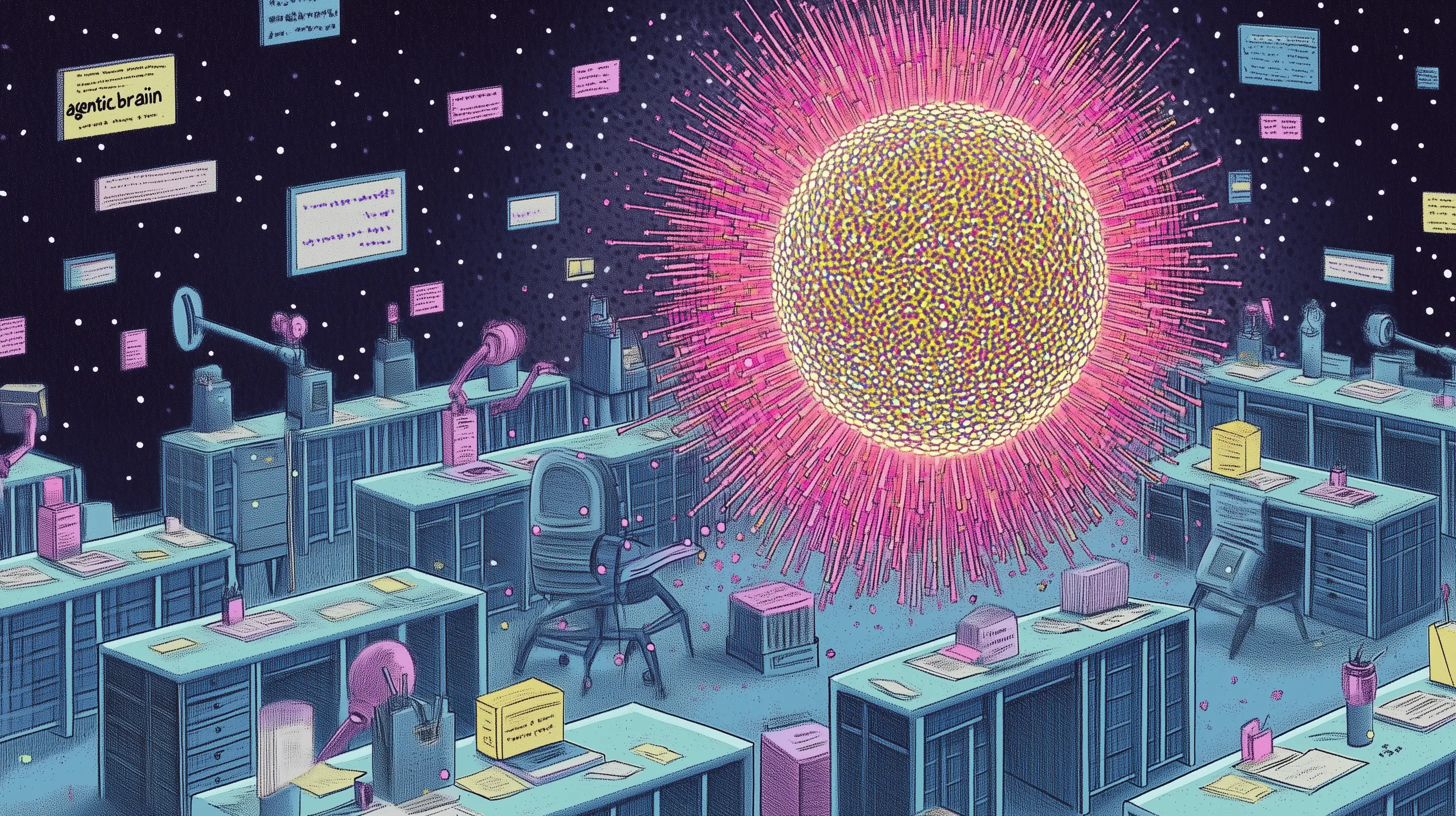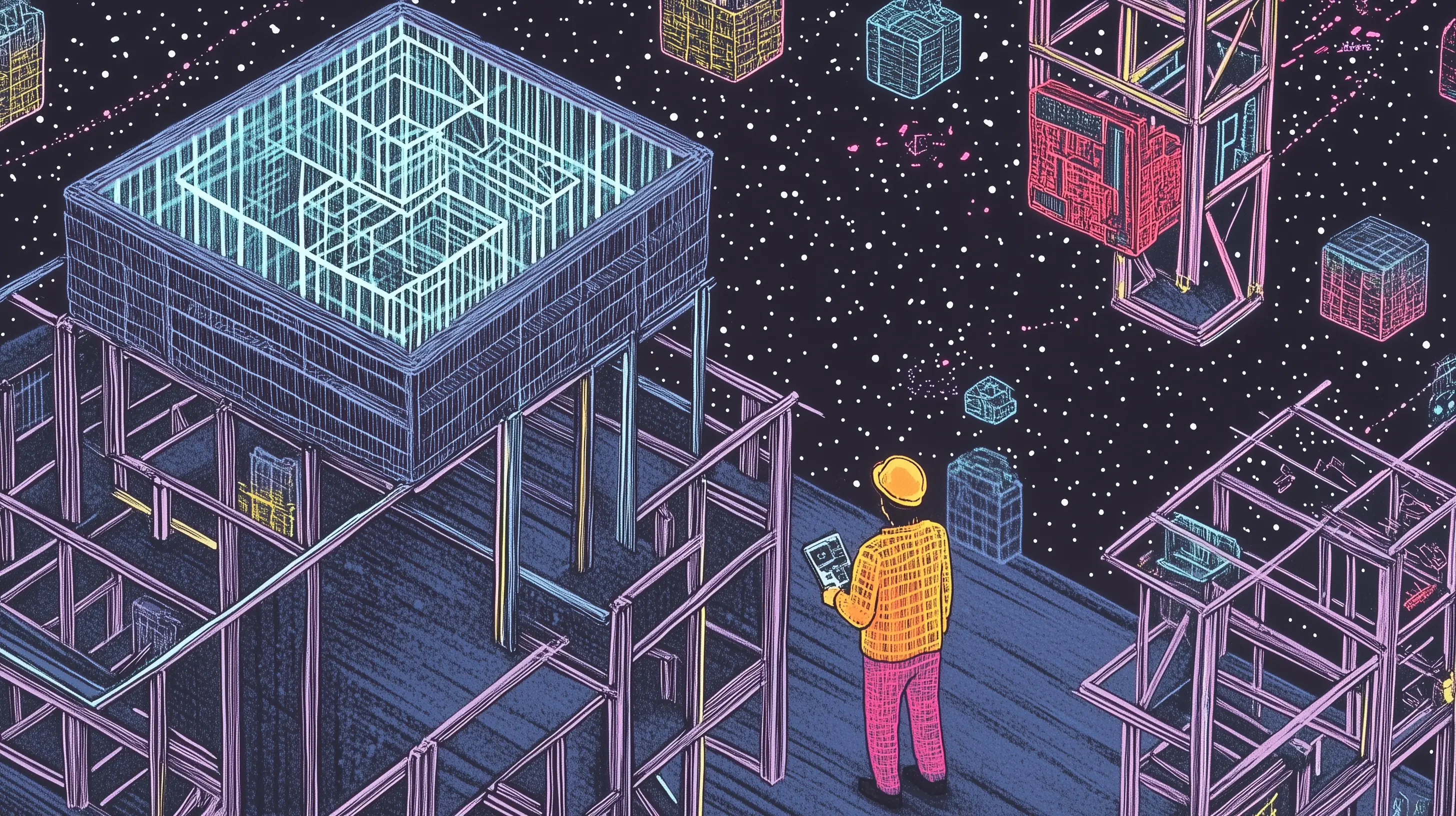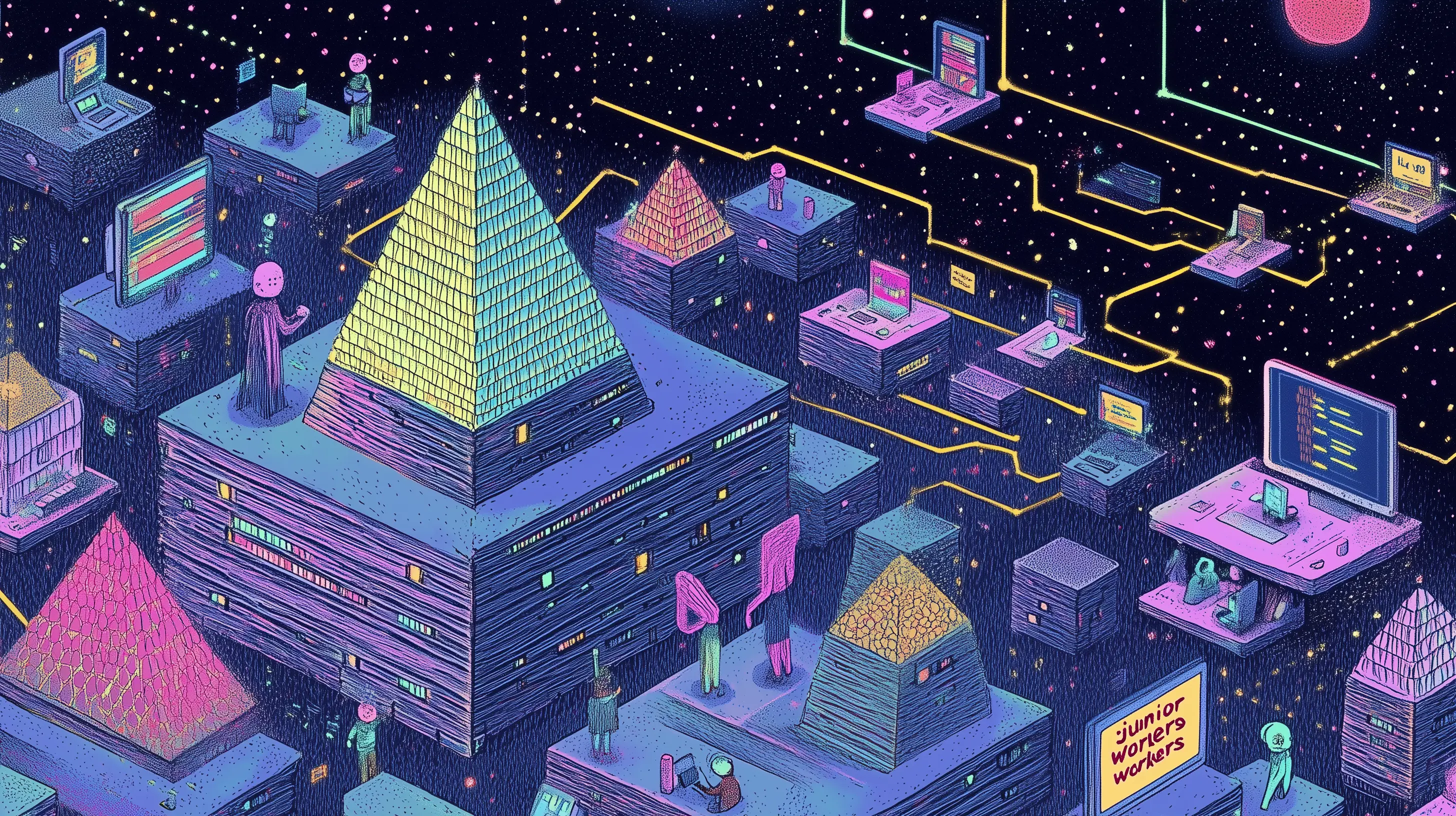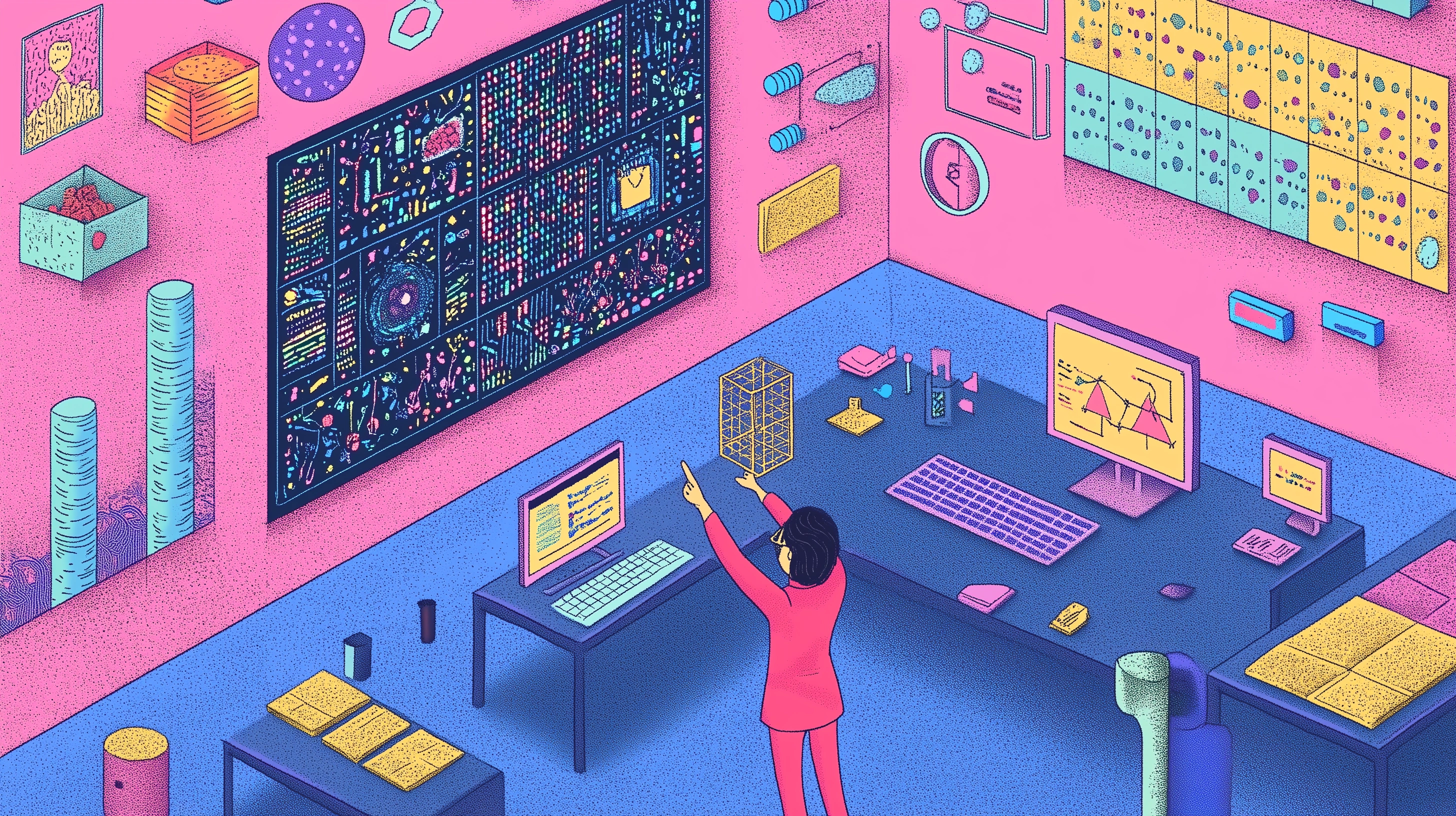What is a Product Studio and What Does One Build?

When I tell people I run a product studio, the question inevitably comes up: "What does a product studio do?" Not surprising, given that the concept is often misunderstood or mixed up with traditional software development companies or digital agencies. So, let’s set the record straight.
1— Defining a product studio
When I tell people I run a product studio, the question inevitably comes up: "What does a product studio do?" Not surprising, given that the concept is often misunderstood or mixed up with traditional software development companies or digital agencies. So, let’s set the record straight. A product studio is so much more than just a software development company or a design consultancy. It’s an end-to-end partner that guides products from the spark of an idea all the way to market success and beyond.
At Eli5, we stand out by bridging two typically disconnected worlds: deep technical expertise and strategic product development. Unlike design studios that focus mainly on aesthetics and UX or consultancies that lean into theory without execution, we work across the entire product lifecycle. This means we’re not only coming up with ideas and designing them, but we’re also tackling technical execution, scaling, and guiding the path to market fit.
Why did we choose this approach at Eli5? Because we saw a gap. There were design-first product studios that lacked the technical depth to handle complex builds and tech-centric development companies that missed the mark on understanding the full business and product strategy. From day one, we aimed to be both. We partnered with startups, corporate innovators, and venture builders who need more than just code or concepts—they need a team that can integrate with them at every stage, solving not just the problem of today but planning for the growth and challenges of tomorrow.
We’re here to ensure that when we build, we build products that matter, that gain traction, and that can scale. And when our clients are ready, we’re right there, helping with strategic thinking, technical complexities, and even preparing for funding or exits.
2 — The role and structure of a product studio
As a product studio, we sit at the crossroads of technology, strategy, and execution, blending these elements to take a product from its first concept to market and beyond. We go far beyond merely code and theory; a product studio operates with an integrated approach that covers the full spectrum of product development.
Our structure is built to adapt and thrive across different phases of product growth. It’s a cross-functional setup where product experts, engineers, designers, and tech strategists come together. Each team member brings a unique perspective to the table, whether it’s deep technical skills, an eye for user experience and aesthetics, or insights into emerging tech. This combination allows us to push beyond just building products; we’re constantly looking for opportunities to maximize impact.
To illustrate, imagine a project where a corporate innovator aims to launch an AI-powered tool for enterprise productivity. At Eli5, this would involve our engineers evaluating technical feasibility and creating a robust architectural plan, while product strategists work on aligning the tool with market needs. Meanwhile, our design team ensures a seamless user experience, integrating user feedback throughout development. This dynamic collaboration helps bring even the most complex ideas to life effectively.
We are big believers in exploration. We’re always tinkering with new technologies, assessing their real-world application potential, and finding ways to leverage them for our clients’ products. This culture of exploration helps us stay ahead of the curve and pinpoint new opportunities before they become mainstream. It’s how we identify when and why to build something, ensuring that we’re solving the right problems from the start.
When products find traction, we focus on scaling and refining them. This could mean adapting the architecture for enterprise-grade reliability, integrating complex systems, or even shifting the product strategy to align with changing market conditions. We’re set up to be there from initial spark to a successful product used at scale.
3 — What Does a Product Studio Build?
Product studios, by design, are built to tackle complex problems and bring innovative solutions to life. Product studios zero in on solving meaningful challenges. These are the products that disrupt industries, leverage cutting-edge technology, and meet unaddressed needs in the market.
Most product studios are well-versed in the early stages, turning ideas into prototypes and MVPs to validate product-market fit. But at Eli5, we take things quite a bit further than that. Our capabilities extend into the technically challenging phases that come after an MVP. We specialize in taking products from that initial validation to robust, enterprise-grade solutions designed to scale.
The types of products we build at Eli5 revolve around SaaS platforms, productivity tools, and hyperautomation solutions that redefine how work is done. Our domain expertise is focused on work-redefining products that boost productivity, efficiency, and connectivity, harnessing technologies like AI, ML, blockchain, and cybersecurity to solve complex problems.
This level of focus is by design. Not every product studio has a narrow specialization, and that’s fine if their work centers only on taking products from concept to MVP. But at Eli5, we’ve chosen a specific lane, combining our deep technical expertise and strategic product focus to become long-term partners. This means that while other studios may hand over a project once an MVP is completed, we’re set up to stay involved, helping products scale to enterprise levels and beyond.
Our approach allows us to be there through the entire product lifecycle, guiding our clients as their products evolve and ensuring that every decision made aligns with future growth. Whether it's developing a new SaaS platform or enhancing an existing product with advanced AI capabilities, our focus is always on building products that solve problems people actually care about.
4 — From Idea to Market: The Studio Approach
Going from idea to V1.0 is a journey full of small, strategic steps that ensure a product is viable, feasible, and ready for the market. At Eli5, we follow a battle-tested, iterative process that takes products from concept to MVP and beyond. This is also a great example of what sets the product studio model apart.
The first phase is problem identification. Ideas are great, but we need to ensure that the problem we’re solving is one that people care about. This is followed by an intense ideation process—a pressure cooker where we take validated problems and transform them into product ideas with real potential.
Once we have a promising concept, we move to prototyping and validation. Here, speed matters, but so does getting it right. We turn ideas into prototypes quickly and put them in front of real users to gather feedback. This iterative loop allows us to refine the concept before diving deeper into development.
Next comes assessing technical feasibility. We make sure that the solutions we envision can actually be built with the current tech landscape, balancing innovation with practicality. Demand testing runs parallel to this stage, where we test if potential users are willing to pay for what we’re building. This double-check ensures that we're building something with real market interest.
With these boxes checked, we create the solution architecture. This phase outlines scenarios of how the product can be developed from MVP to a scalable solution, providing a clear technical roadmap. Once we have everything ready, it’s time to build the MVP—distilling the idea down to its core, getting the essentials in place, and putting the product into users’ hands as soon as possible.
After launching, it’s all about incremental growth. We prioritize continuous cycles of design, engineering, and discovery, iterating and refining the product to align with user needs and business objectives. This phase sets the stage for long-term success, making sure we don’t just launch a product but build one that’s designed to evolve, scale, and lead in its space.
Build things people want.
5 — Long-term Partnerships and Strategic Collaboration
One of the defining components of a product studio is the commitment to long-term partnerships. We see ourselves as more than just a service provider—we’re a strategic partner embedded in the organization from early stages to significant milestones and potential exits.
We work directly with founders and executives and that’s where real transformation happens. This close collaboration allows us to provide continuous input, helping our clients pivot when needed, refine their strategy, and build on new opportunities as they emerge. We advise on everything from incorporating the latest in emerging technology to interpreting user data for high-impact decisions.
This approach leads to long-lasting relationships where we’re not just building one-off products but are involved in ongoing iterations, new feature developments, and even major pivots when the market demands it.
Over the years, this dedication to collaboration has meant that we engage in various partnership structures. While some projects align best with traditional fee structures, others benefit from equity partnerships or performance-based models. These models align our success directly with our clients, creating a sense of shared ownership and investment in the product’s long-term growth.
6 — The ideal clients for a product studio
A product studio isn’t for everyone—and that’s the point. The nature of our work is tailored for those who need more than just code or design. It’s for those who seek an end-to-end partner to navigate the full spectrum of product development.
We collaborate with a specific set of clients: startups pushing through seed-stage growth, corporate innovators aiming to break away from traditional models, and venture builders who need a specialized team to execute on bold ideas. For us these are the clients who benefit most from our model.
Startups turn to us when they need rapid iteration and technical depth to go from idea to MVP and beyond. Corporate innovators partner with us to bring startup-level agility to their projects and unlock the potential of deep-tech in ways that larger teams can’t execute quickly. Venture builders come to us when they need an experienced, plug-and-play team that can turn ambitious plans into tangible products.
What makes a client ideal for a product studio is a shared understanding of long-term goals, a commitment to iterative progress, and a desire for a partner who doesn’t just follow instructions but collaborates strategically. Whether the task is to develop a new product, enhance an existing one, or scale it to enterprise levels, the clients who see the most success are those ready for a partnership that’s as invested in their vision as they are. Great product studios act as a team that is an extension of your own, fully integrated, and laser-focused on results that matter.
7 — Why product studios are growing in popularity
The demand for faster time-to-market has never been higher. Startups and enterprises alike need to move quickly from idea to product without the pitfalls of fragmented outsourcing or the limitations of rigid in-house teams. Product studios step in here, equipped with cross-functional teams ready to build, adapt, and iterate rapidly. The studio model is built to get products live without sacrificing quality, cutting down the development cycle without cutting corners.
Second, the scope of problems tech companies aim to solve is more complex than ever. Simple code won’t cut it when projects require integration with advanced AI, blockchain, or enterprise infrastructure. The value of a product studio lies in its versatility—being deeply embedded in tech, design, and strategy. Studios like Eli5 take the best of emerging tech, leverage real-world experience, and channel it into products that aren't just built to work but are built to excel.
Product studios also offer strategic guidance. Unlike traditional agencies that often just follow a brief, a product studio collaborates to challenge ideas, refine strategies, and identify opportunities for better outcomes. Product studios bring an agile mindset with an eye for scalability, helping clients launch, grow, and thrive. This is why, more than ever, startups, corporate innovators, and venture builders are opting for product studios to navigate from concept to exit with confidence.
8 — The future of product studios
The rise of product studios signals a shift in how tech products are conceived, developed, and scaled. As businesses navigate an ever-evolving digital landscape, the demand for partners who offer end-to-end expertise—combining problem-solving, rapid execution, and technical depth—continues to grow. Product studios are uniquely positioned to fill this role, making them an essential part of the tech ecosystem.
Looking forward, the role of product studios will only expand. The ability to integrate cutting-edge technologies like AI, machine learning, and blockchain into viable, scalable products will become the standard, not the exception. Studios that harness these technologies effectively and translate them into practical, user-focused solutions will set themselves apart from traditional development models and standalone service providers.
Moreover, the future will likely see product studios taking on even more strategic partnerships. Companies won’t just seek studios for initial product builds; they’ll rely on them for long-term innovation, complex scaling, and ongoing technical challenges. This evolution will cement the studio model as a go-to approach for sustainable, long-term product growth.
At Eli5, our focus on innovation, technical expertise, and partnerships positions us to thrive in this new landscape. We’re committed to pushing the boundaries of what’s possible, ensuring that we stay ahead of the curve and that our clients do too. The product studio model isn’t just a trend—it’s a solution to the complexities of modern tech development, and it’s here to stay.
9— Bonus: Types of products built by products studios
1. SaaS (Software as a Service)
- Examples: Asana, Slack, Notion, Figma.
- Monetization: Subscription-based, either periodic or pay-per-use, with freemium options.
- Pros: Scalable with cloud hosting and offers a steady revenue stream.
- Cons: Fierce competition and requires continuous updates to keep users engaged.
2. Marketplaces
- Examples: Airbnb, eBay, Etsy, Fiverr.
- Monetization: Transaction fees, listing charges, premium features, or ads.
- Pros: Scalability without inventory and direct interactions between buyers and sellers.
- Cons: Trust-building challenges and vulnerability to regulatory changes.
3. Social Platforms
- Examples: Facebook, Reddit, Twitter, Stack Overflow.
- Monetization: Predominantly ads, sponsored content, and premium memberships.
- Pros: High user engagement and continuous user-generated content.
- Cons: Privacy concerns and maintaining community standards.
4. On-Demand Services
- Examples: Uber, Deliveroo, Instacart.
- Monetization: Service fees charged to consumers, providers, or both.
- Pros: Meets instant needs, encouraging repeat usage.
- Cons: Operational logistics and high regulatory hurdles.
5. Utility Platforms
- Examples: Skyscanner, Google Search.
- Monetization: Affiliate marketing, advertisements, premium services, or partnerships.
- Pros: High user retention due to inherent usefulness.
- Cons: Dependence on third-party data and competition from niche platforms.
6. Content Platforms
- Examples: YouTube, Medium, 9GAG, Dribbble.
- Monetization: Primarily ad-driven, subscriptions, and paid promotions.
- Pros: Continuous content keeps users engaged and offers creator monetization opportunities.
- Cons: Copyright issues and maintaining content quality.
7. Hyperautomation Platforms
- Examples: UiPath, Zapier, n8n.
- Monetization: Subscription-based or usage-based pricing.
- Pros: High demand for efficiency and reduced human error.
- Cons: Initial complexity and integration challenges.
8. Fintech Solutions
- Examples: Revolut, Robinhood.
- Monetization: Transaction fees, premium features, or interest spreads.
- Pros: High market potential and user retention.
- Cons: Strict regulatory requirements and significant security needs.
9. Healthtech Platforms
- Examples: Teladoc, Babylon Health.
- Monetization: Subscription services, per-usage fees.
- Pros: High demand for digital health solutions.
- Cons: Heavy compliance with health regulations.
10. EdTech Platforms
- Examples: Coursera, Khan Academy.
- Monetization: Subscriptions, pay-per-course, or institutional licenses.
- Pros: Expanding global market reach.
- Cons: Requires ongoing content updates and user engagement.
11. Blockchain-Based Applications
- Examples: OpenSea, Uniswap.
- Monetization: Transaction fees, token sales, or platform fees.
- Pros: High innovation potential.
- Cons: Regulatory ambiguity and market volatility.
12. Productivity Tools with AI Integration
- Examples: ClickUp, AI-powered Microsoft Office features.
- Monetization: Subscription-based or premium features.
- Pros: High repeat usage and improved user experience.
- Cons: Constant feature updates required to stay competitive.
13. Community and Collaboration Platforms
- Examples: Discord, Slack.
- Monetization: Subscriptions and premium features.
- Pros: High retention with niche focus.
- Cons: Challenges with scaling and moderation.
14. E-commerce with Personalization AI
- Examples: Shopify with AI product recommendations.
- Monetization: Subscription fees, commission on sales.
- Pros: Enhanced user experience that boosts sales.
- Cons: Intense competition and high user expectations.
.webp)




















.webp)

.webp)





.webp)






%20(1).webp)







.webp)
.webp)


